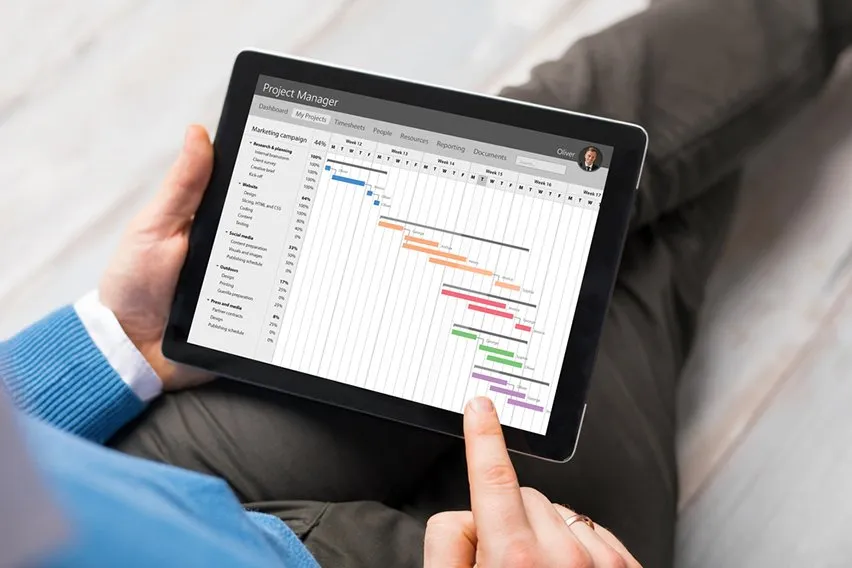Profit vs Profitability: What’s the Difference?

Profit and profitability are two different things. They’re often confused with each other. Profit is the measure of how much money a company takes in overtime. Profitability is the measurement of the return on investment. A profitable company might not be making any profit. This is because it’s reinvesting all its earnings to grow larger. Understanding which one matters most for your business will help you make decisions that drive success.
This article will discuss profit and profitability. You’ll learn what each means, how to use them, and more.
In this article, we’ll cover:
A Comparison of Profit and Profitability
How to Use Profitability and Profit
Is Profitability a Better Measurement than Profit?
What is a Good Profitability Ratio?
A Comparison of Profit and Profitability
Profit and profitability are similar. They are not the same. Each one of these metrics should be used differently. They each serve their own important purposes.
Profit
Profit is the difference between what a business makes and what it spends. It’s calculated by subtracting costs from revenue. Profit is useful for businesses that sell products and services. Examples of these would be Wal-Mart or Mercedes.
Profit margins can be an important metric for small businesses. It helps them determine whether or not they are bringing in enough money to remain solvent. Profit is useful if a company wants to expand into other markets. They can buy new equipment or open up shop in another location.
To gauge profit, businesses use cash flow statements and income statements. Income statements measure a business’s sales and operating expenses for a period of time. Cash flow statements examine how much money is coming in and going out over a certain period of time. These documents give companies a good idea if they’re making enough profit to stay afloat. Small businesses that want to grow need to make more than just enough profit to break even. They need to make enough profit to expand and grow larger.

What are the three types of profit?
Profit can be split into three categories. These are economic profit, normal profit, and accounting profit.
- Economic profit only factors in opportunity costs. Opportunity cost represents the money a business could’ve made. This is considering if it did not spend its time and resources on something else. For example, say a company spends $100 million building a new factory. That amount of money could’ve produced an extra $200 million in revenue. The opportunity cost is $200 million. Economic profit takes the difference between the actual revenue and this amount of money. The ideal type of economic profit would be $100 million.
- Normal profit represents the minimum amount of money a company needs to operate. It includes opportunity costs and all normal business-related expenses. These include rent, salaries, and supplies. This type of profit is also known as necessary profit. If a company makes less than the normal profit it requires, then it’s in danger of closing down or filing bankruptcy.
- Accounting profits are used by companies to improve their books. It includes things like non-recurring items and excludes necessary business expenses. Accounting profits are often confused with economic profits, but they are not the same thing.
Profits are important measures for small businesses. They can drive decision-making when it comes to expansion, equipment purchases, or other business opportunities.
Profitability
Profitability is a measurement of how well a company is doing for the business owner and stockholders. It’s especially important for public companies. It’s measured by the return on investment, or ROI. This helps companies determine whether they’re making enough money. Profitability describes how much the company makes compared to its investment in assets like equipment and technology. It measures how efficient those investments are.
A business can have a lot of profit. If it’s not doing well at all, there might be trouble ahead for that company. That doesn’t mean that companies without much profit are struggling either. They could simply be reinvesting everything into the company to grow larger and gain more power in their industry. Some businesses actually keep reinvesting their earnings to expand even more. Profitability matters for businesses that use debt or capital investments to grow.
Profitability can be measured by return on assets (ROA) or profit margin ratio. This is the ratio of profit over total costs like inventory, equipment, and supply. The ROA helps companies determine whether or not their investments are creating acceptable returns. When this measurement is low, it means that the company is either losing money or making very little for its owners.
Businesses with positive ROA are doing well. They have a high return on investment. This is attractive to investors and lenders. Businesses with negative ROA are struggling to make good investments. Investors may not want to back these companies. That could affect their ability to continue growing.
How to Use Profitability and Profit
Profitability tells a company if it’s doing well or failing. It shows whether a business is using its money in a smart enough way to grow. Companies that have high profitability are worth investing in. They’re making enough money to reinvest into the company. This will allow it to grow even bigger.
Profitable companies use their assets efficiently. These businesses are making the most of their infrastructure, investments, and staffing. They’re making money. They’re also not wasting anything by overspending on equipment or human resources. That’s the difference between profitability and just breaking even for many small businesses. A negative profit margin is a big red flag.
Profitability is an important measurement for big and small businesses alike. It helps them decide whether or not they’re doing well enough to grow. It also gives an idea of how much funding they need to make their business stronger.
Is Profitability a Better Measurement than Profit?
The difference between profitability and profit is that profitability measures the long-term health of a company. Profit is more short-term. This definition can also say that profit focuses on bottom-line income while profitability measures the return on investment.
Profitability helps investors see how well their investments are paying off for them. It shows whether or not they’ll continue to grow. It also shows that the company is willing to reinvest its earnings into itself. Investors can then invest more money into the business easily.
Profitability is a great measurement for investors. They’re interested in how well their investments are working out for them. When dividends, stock value, or share price are high, investors are happy with the performance of their assets. Profitability shows them if this trend will continue.

What is a Good Profitability Ratio?
A profitability ratio can be defined as the ratio of profits over investments. The higher the ratio, the better a company is doing. A profitability ratio can be measured as net profit divided by total assets for example. For companies that are publicly traded on an investment exchange, this information is easy to find. The top three U.S. exchanges include NYSE (New York Stock Exchange), NASDAQ (National Association of Securities Dealers), and AMEX (American Stock Exchange). These are the three most popular places to trade stocks, bonds, mutual funds, and ETFs.
Businesses that aren’t listed on an investment exchange might not have to provide profitability ratios. However, they will need to pay close attention to their finances.
A profitability ratio is good when it’s above 10%. It shows that the business is more than just breaking even for its owners. A high profitability ratio means that the company is making good investments and creating a solid foundation for growth.
Profitable companies can reinvest their earnings into positive results for investors and lenders. Lenders and investors look at this measurement to see if the business will be able to repay its debts. Reinvesting earnings also means that the company can grow even more through reinvestment of capital. Many businesses have a difficult time measuring profitability ratios. They don’t have access to assets and investments on a regular basis. This is common for non-listed businesses, new companies, or family-owned businesses.
Key Takeaways
A profitability ratio is the most important measurement for a company. It shows whether or not they’re doing well enough to grow. It also shows how much funding they need in order to make their business stronger. If a profitability ratio is low, that business needs to reassess how it’s investing its money.
There are differences between profitability and profit. Profitability measures the long-term health of a company. Profit focuses on bottom-line income. When thinking about investing in any type of asset, it’s best to take both measurements into consideration. Profitability should always be considered in addition to profit. Profit is a shorter-term metric. It can help an investor see if their asset is paying off. A combination of the two measurements will help investors and lenders determine how well a company is doing in general. These metrics also tell whether or not it deserves more funding.
This article discussed profit and profitability in depth. Topics included what they are and why they’re important. You also learned their differences and why businesses should use these metrics. Hopefully, this article cleared up all of your questions regarding profit and profitability.
Read more helpful guides on our resource hub.
RELATED ARTICLES


 Asana Pros and Cons: Top 4 Advantages & Disadvantages
Asana Pros and Cons: Top 4 Advantages & Disadvantages What Is a Project Timeline and How to Create It in 7 Steps
What Is a Project Timeline and How to Create It in 7 Steps 5 Best Asana Alternative for Project Management
5 Best Asana Alternative for Project Management Freedcamp Vs Asana: Feature & Pricing Comparison
Freedcamp Vs Asana: Feature & Pricing Comparison Trello Vs Meistertask Management Tool Comparison
Trello Vs Meistertask Management Tool Comparison